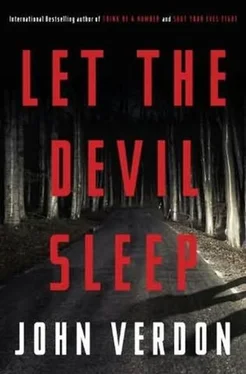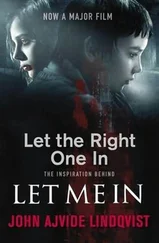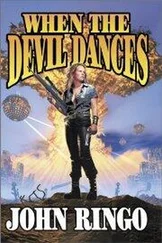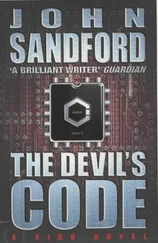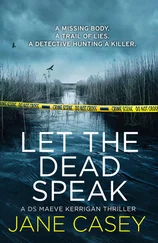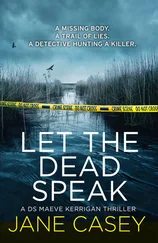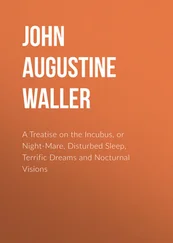Kyle broke the silence. “These people you’ve been interviewing-do they have much in common?”
Kim chewed thoughtfully, swallowing before she spoke. “Anger.”
“All of them? After all these years?”
“In some it’s more obvious, because they express it more directly. But I think the anger is there in all of them, in some form or other. It would have to be, wouldn’t it?”
Kyle frowned. “I thought anger was a stage of grief that eventually passed.”
“Not if there’s no emotional closure.”
“Because the Good Shepherd was never caught?”
“Never caught, never identified. And after the crazy Max Clinter car chase, he just evaporated into the night. It’s a story without an ending.”
Gurney made a face. “I think the story may lack more than an ending.”
There was a brief silence around the table as everyone looked at him expectantly.
Kyle finally prompted him. “You think the FBI got part of it wrong?”
“That’s what I want to find out.”
Kim looked baffled. “Got what wrong? What part of it?”
“I’m not saying for sure that they got anything wrong. I’m just saying it’s a possibility .”
Kyle’s expression became more excited. “What part might they have gotten wrong?”
“From what little I know at the moment, it’s just possible they got it all wrong.” He glanced at Madeleine. There was a flicker of conflicting emotions on her face, too subtle for him to identify.
Kim looked alarmed. “I don’t understand. What are you saying?”
“I hate using words like this, but the whole thing has kind of a wobbly look. Like a very big building on a very small foundation.”
Kim was shaking her head rapidly in a kind of reflexive disagreement. “But when you say they may have gotten it all wrong, what on earth…?”
Her voice trailed off as the phone in Gurney’s pocket began ringing.
He took it out, glanced at the ID, and smiled. “I have a feeling I’m going to get asked that question again in about five seconds.” He stood up from the table and put the phone to his ear. “Hello, Rebecca. Thanks for getting back to me.”
“ ‘A fatal flaw in the FBI construct’?” There was a cutting edge of anger in her voice. “What was that message all about?”
Gurney stepped away from the table in the direction of the French doors. “Nothing conclusive. I just have questions. There may or may not be a problem, depending on what the answers are.” He stood with his back to the others, looking out toward the western hills and the purple remnants of the sunset without really registering the beauty of what he was seeing. He was focused on one objective: getting invited to a meeting with Agent Trout.
“Questions? What questions?”
“Actually, I have quite a few. You have time to listen?”
“Not really. But I’m curious. Go ahead.”
“The first is the biggest. Did you ever have any doubts about the case?”
“Doubts? Like what?”
“Like what it was really all about.”
“You’re not making sense. Be more specific.”
“You, the FBI, the forensic-psych community, criminologists, sociologists-just about everyone but Max Clinter-all seem to agree on everything. I’ve never seen such a cozy level of consensus around what is essentially an unsolved series of crimes.”
“Cozy?” There was acid in her voice.
“I’m not implying anything corrupt. It just seems as if everyone-with the conspicuous exception of Clinter-is perfectly happy with the existing narrative. All I’m asking is whether this agreement is as universal as it seems and how certain you are about it personally.”
“Look, David, I don’t have all evening for this conversation. Cut to the chase and tell me what’s bothering you.”
Gurney took a deep breath, trying to defuse his irritation at her irritation. “What’s bothering me is that there are a lot of elements in the case and they all have to be interpreted in a particular way in order to support the overarching narrative. And I get the impression that it’s the narrative that’s driving the interpretation of its elements, rather than the other way around.” Rather than the way a sane, objective, reliable analysis should be conducted , he was tempted to add but didn’t.
Holdenfield hesitated. “Be more specific.”
“There are obvious questions raised by each data point, each bit of evidence, each fact. The answers to all of them appear to be coming from the investigative premise instead of the investigative premise coming from the answers to the questions.”
“You call that being more specific?”
“Okay. Questions. Why only Mercedeses? Why stop at six? Why a Desert Eagle? Why more than one Desert Eagle? Why the little plastic animals? Why the manifesto? Why the combination of cool rational argument with hot religious language? Why the rigid repetition of-”
Holdenfield broke in, sounding exasperated. “David, each of those issues has been examined and discussed in detail-every one of them. The answers are clear, they make perfect sense, they form a coherent picture. I really don’t understand your point at all.”
“So you’re telling me that there was never a competing investigative premise?”
“There was never any basis for one. What the hell is your problem here?”
“Can you picture him?”
“Picture who?”
“The Good Shepherd.”
“Can I picture him? I don’t know. Is that a meaningful question?”
“I think so. What’s your answer?”
“My answer is that I don’t agree that it’s meaningful.”
“It sounds to me like you can’t picture him. Neither can I. Which makes me think there may be contradictions in the profile that are screwing up the gut-level process of imagining a face. Of course, he might be a woman. A woman strong enough to handle a Desert Eagle. Or he might be more than one person. But we’ll put that aside for now.”
“A woman? That’s absurd.”
“No time to argue that right now. I have one last question for you. Amid all the professional consensus, did you or any of your forensic-psych colleagues or anyone at the Behavioral Analysis Unit ever disagree among yourselves about anything in the case hypothesis?”
“Of course we did. There are always diverse opinions, differences in emphasis.”
“For example?”
“For example, the concept of pattern resonance emphasizes the transference of energy from an original trauma into a current situation-which makes the current manifestation essentially an inanimate vehicle that is given life by the past. The application of the imitation-instinct paradigm would give the current situation a greater validity of its own. It’s a repetition of a past pattern, but it does have life and energy of its own. Another concept that might apply is the transgenerational transmission of violence theory, which is a traditional learned-behavior model. There was ample discussion of all those ideas.”
Gurney laughed.
“What’s funny?”
“I can picture you guys staring out at a palm tree on the horizon and debating the number of coconuts on it.”
“Your point being?”
“What if the palm tree itself is a mirage? A group delusion?”
“David, if anyone in this conversation is delusional, it’s not me. Is that it for the questions?”
“Who benefits from the existing hypothesis?”
“What?”
“Who benefits from the-”
“I heard you. What the hell do you mean?”
“I have this sense of a sticky synergy connecting the facts of the case with the weak points of FBI methodology and the career dynamics of the professional forensic community.”
Читать дальше
